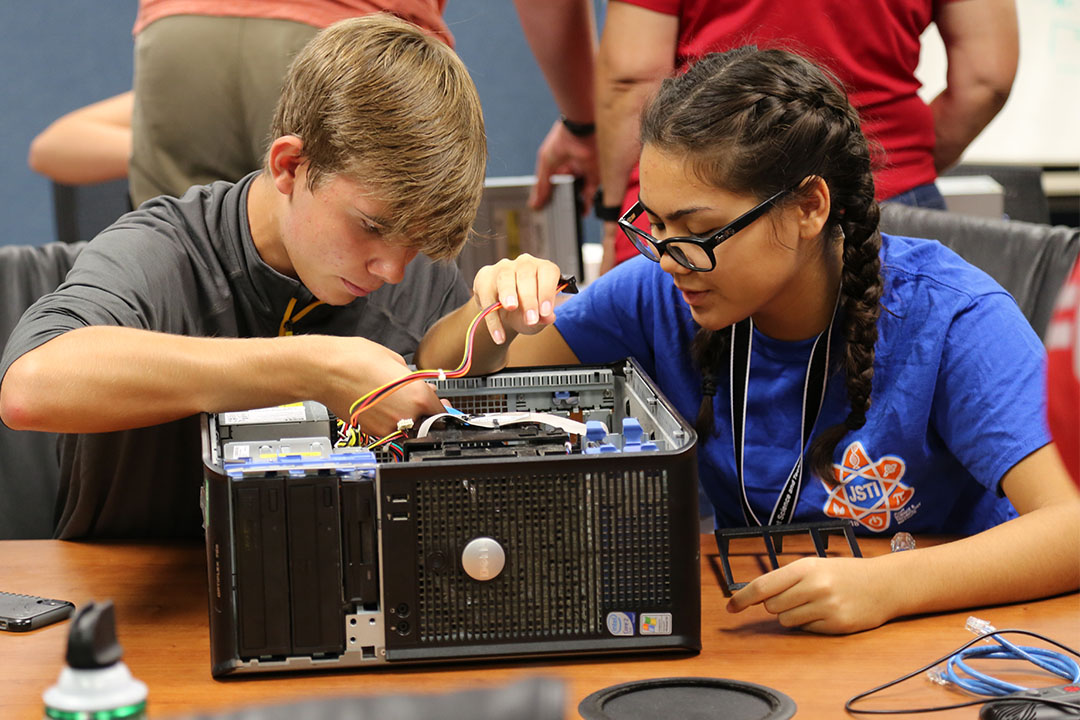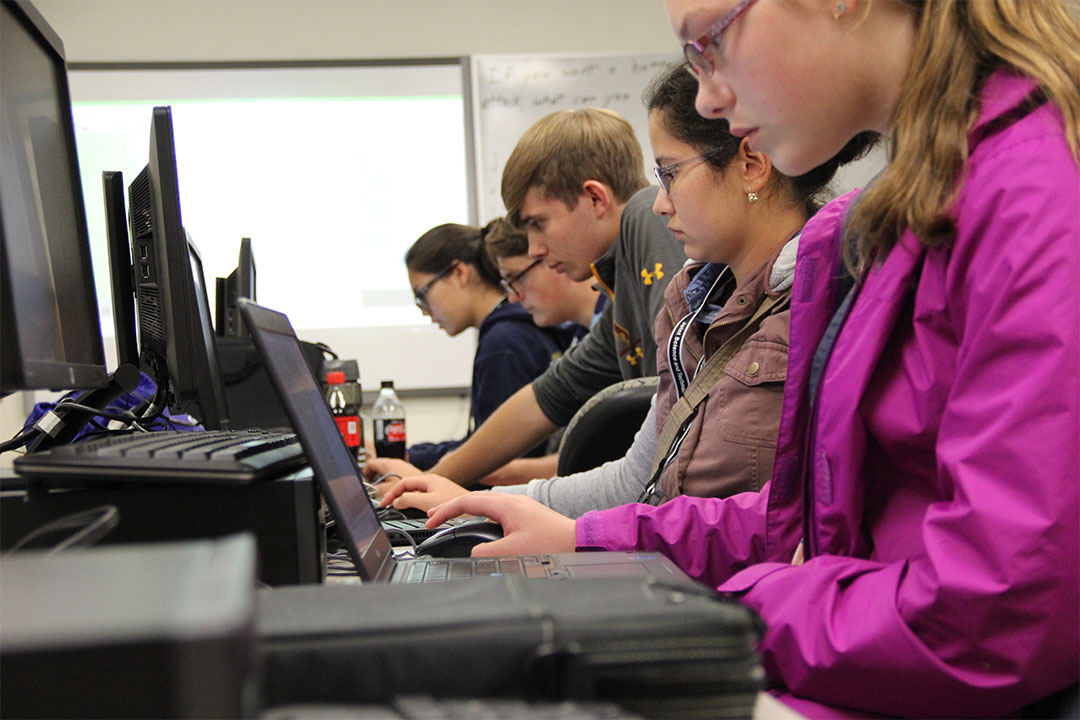// NEWS RELEASE
The summer of STEM at RDECOM C&B Center
CCDC Chemical Biological Center Public Affairs | September 6th, 2018
The summer of STEM at RDECOM C&B Center
DEVCOM CBC Public AffairsSeptember 6th, 2018

JSTI students learn about the inner workings of computers at RDECOM C&B Center’s MSA Branch facility.
High school students from around the country recently took part in a two-week STEM program hosted by the Joint Science and Technology Institute (JSTI) at Harford Community College to learn from and engage with some of the brightest minds in the chemical and biological defense community.
Through the JSTI program, students are mentored by Department of Defense scientists at the U.S. Army Research, Development and Engineering Command Chemical & Biological (RDECOM C&B) Center. Funded by the Defense Threat Reduction Agency (DTRA), the program grants opportunities to students from as far away as Guam and as nearby as Aberdeen, Maryland.
Since its inception in 2012, the JSTI program has promoted STEM-related topics to students with a wide range of skills, backgrounds and interests. In 2015, DTRA invited the modeling and simulation practitioners within the RDECOM C&B Center Research & Technology Directorate to get involved.
“Some students come to us with little to no STEM experience so this is the first time many have engaged in this type of curriculum,” explained Michael Kierzewski, the Center’s Modeling, Simulation and Analysis (MSA) Branch chief. “Others have experienced STEM in their schools or sought out opportunities to engage with STEM on their own time.”
Kierzewski’s classes focus on how math allows us to understand our physical world using probability, statistics and experimentation to develop system models and ultimately make useful predictions about how systems are likely to function. Students complete several projects, including one called the “statapult” where students must use information provided by instructors to set up, characterize and reach a target at a specified distance using the catapult-like device.
“Once we give the final information on the distance, students can make the correct calculations and hit the target within just two adjustments,” said Kierzewski. “They are very accurate and solve the problems quickly.”
Students also had a chance to work with the Hazard Prediction and Assessment Capability (HPAC), a deployable modeling software used to assist in emergency response to hazardous agent releases.
Given variables such as wind speed, geographic coordinates and the type of chemical agent being dispersed, students can input data into the computer program and see the results on screen, depicted in a red and yellow map.

RDECOM C&B Center computer scientist Nirmala Pinto, who was the primary instructor for the class, reflected on her students’ performance after using HPAC.
“They problem solve in their own way, so as instructors, we need to also adapt slightly – we need to be open to new ways of thinking,” explained Pinto. “When they ran into a problem, they used their phone or the internet to find the information they needed to solve the problem.”
The rigorous program provided by JSTI ensures students are constantly challenged and learning new things they can apply in their future studies.
“I’m learning a lot of things I didn’t know about but I’m also getting a more solid understanding of other concepts I’ve already learned,” said Corey Chisholm, a rising high school junior from Delaware. “I’ll definitely be able to apply the things I’ve learned here in my classes next year.”
Students also had an opportunity to set foot inside RDECOM C&B’s MSA Branch facility, where they learned about the inner workings of computers through a guided computer tear-down to examine the parts inside.
Others learned about packaging development in the packaging branch of the Advanced Design and Manufacturing Division (ADM). Students designed and developed packaging to protect an egg from breaking when dropped from a height of seven feet. They also developed static sensors to monitor the amount of static electricity buildup within a given package.
“The skills learned over the two week class utilize all aspects of STEM,” said Bob Pazda, Supervisory Electronics Engineer of RDECOM C&B Center’s Electronic Design and integration Branch. “They learned how to solder and develop circuitry, design parts for 3-D printing, problem solve and think critically. The lessons learned are invaluable for these future scientists and engineers.”
The experience gave students an inside look at some of the career opportunities available related to STEM subjects.
“This two-week experience was very beneficial to me and my peers and has increased my interest in STEM,” one student reflected. “Very few of my classmates back home had an opportunity like this so I’m truly thankful for it.”
“The JSTI programs are a great way for us to share our time and talents with the next generation of scientists.” Kierzewski said. “Our role in the CB defense space is more than just research for the warfighter. It’s to inspire and encourage students to pursue careers in STEM fields.”
The U.S. Army Combat Capabilities Development Command (DEVCOM) leads in the discovery, development and delivery of technology-based capabilities to enable Soldiers to win our nation’s wars and come home safely. DEVCOM is a major subordinate command of the U.S. Army Futures Command. The DEVCOM Chemical Biological Center is the Army’s principal research and development center for chemical and biological defense technology, engineering and field operations. The DEVCOM Chemical Biological Center is headquartered at Aberdeen Proving Ground, Maryland.
